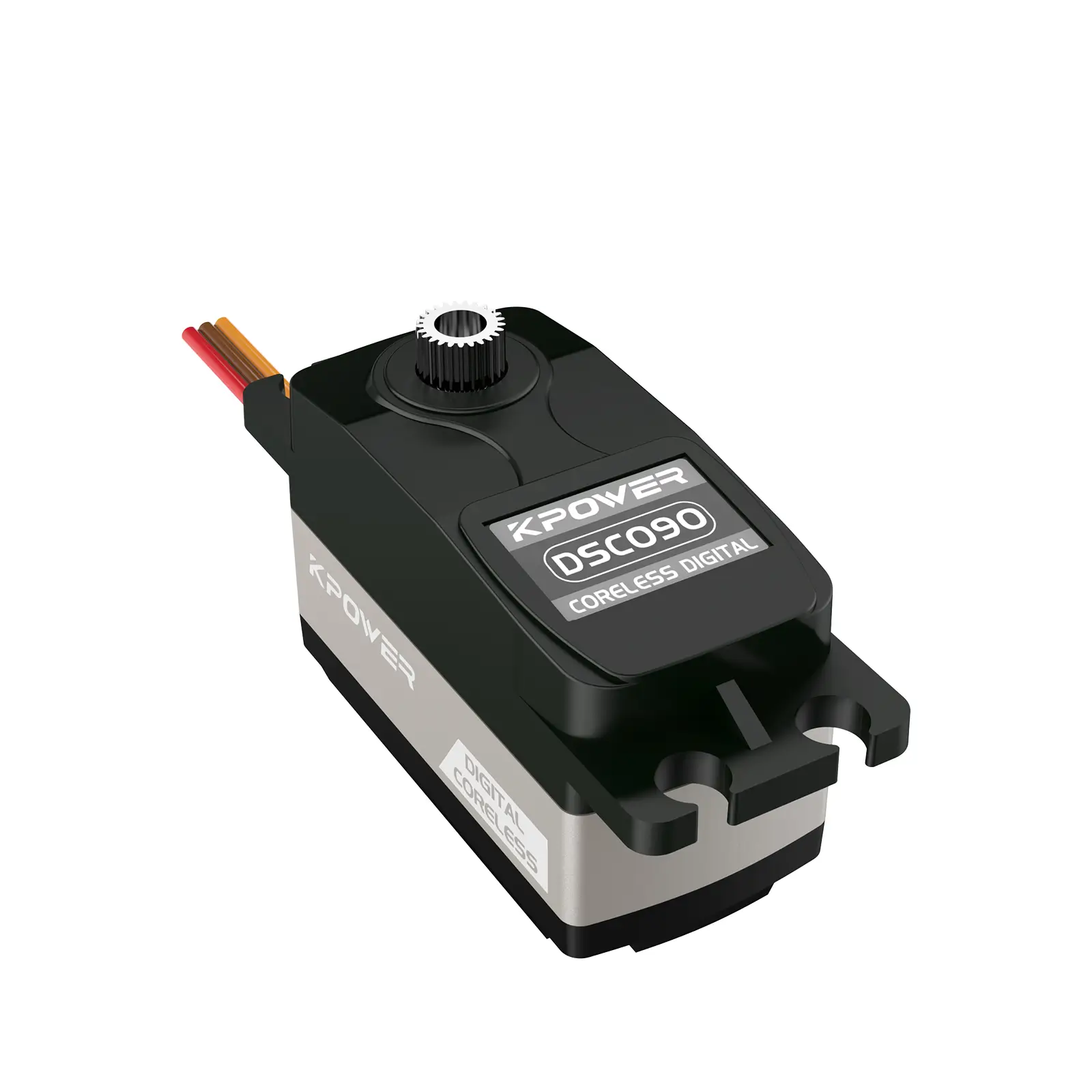In the heart of every high-precision machine—from robotic arms assembling smartphones to CNC machines carving intricate designs—lies a critical component that ensures accuracy, speed, and reliability: the DC servo motor. These motors are the unsung heroes of modern automation, enabling industries to achieve feats that were once deemed impossible. But what makes DC servo motors so indispensable? Let’s dive into their design, working principles, and the revolutionary impact they’ve had across sectors.

What is a DC Servo Motor?
A DC servo motor is a compact, high-performance motor designed for precise control of angular or linear position, velocity, and acceleration. Unlike standard DC motors, servo motors integrate a feedback system that constantly monitors and adjusts their performance. This closed-loop control mechanism allows them to correct errors in real time, delivering unmatched accuracy—even under varying loads or conditions.
The core components of a DC servo motor include:
Motor Unit: A DC motor (brushed or brushless) generates rotational force. Feedback Device: Sensors like encoders or potentiometers track the motor’s position/speed. Control Circuitry: A dedicated controller processes feedback data and adjusts the motor’s input voltage.
How Does It Work?
Imagine a robotic arm tasked with placing microchips on a circuit board. The arm must move swiftly yet stop exactly at the target location. Here’s how a DC servo motor makes this possible:
Command Signal: The system sends a target position or speed to the motor controller. Motion Initiation: The motor starts rotating, powered by a DC voltage. Real-Time Feedback: Sensors measure the motor’s actual position and relay it to the controller. Error Correction: The controller compares the actual position with the target. If there’s a discrepancy, it adjusts the voltage to minimize the error.
This process repeats thousands of times per second, ensuring movements are smooth, precise, and repeatable.
Why DC Servo Motors Stand Out
Precision: Tolerances as tight as ±0.01° make them ideal for tasks requiring micron-level accuracy. High Torque at Low Speeds: They deliver consistent torque even at minimal RPMs, perfect for heavy-load applications. Rapid Response: With near-instantaneous adjustments, they excel in dynamic environments. Energy Efficiency: By drawing power only when corrections are needed, they reduce energy waste.
Applications Transforming Industries
Robotics: From warehouse logistics bots to surgical robots, servo motors enable dexterous movements. CNC Machinery: They ensure cutting tools follow exact paths, producing flawless components. Aerospace: Used in flight control systems to adjust wing flaps and rudders with split-second precision.
But the story doesn’t end here. The true magic of DC servo motors lies in their adaptability. In Part 2, we’ll explore advanced control techniques, emerging trends like IoT integration, and how these motors are shaping the future of smart factories and beyond.
In Part 1, we uncovered the fundamentals of DC servo motors—their design, feedback-driven control, and industrial applications. Now, let’s delve deeper into the technologies that elevate their performance and the innovations poised to redefine their role in the era of Industry 4.0.
Advanced Control: The Brain Behind the Brawn
The precision of a DC servo motor hinges on its control system. Most modern systems use Proportional-Integral-Derivative (PID) control, a mathematical algorithm that optimizes three factors:
Proportional (P): Adjusts power based on the current error (e.g., if the motor is far from its target, it applies more voltage). Integral (I): Addresses accumulated past errors to eliminate steady-state inaccuracies. Derivative (D): Predicts future errors by analyzing the rate of change, preventing overshooting.
Tuning these parameters ensures the motor responds swiftly without oscillations. For instance, in 3D printers, PID tuning allows layers to be deposited with flawless alignment.
Smart Feedback Systems
The feedback device is the motor’s “eyes and ears.” Two common types include:
Optical Encoders: Use light and photodiodes to count rotations. High-resolution encoders can detect movements as small as 0.001°. Resolvers: Electromagnetic sensors ideal for harsh environments (e.g., automotive manufacturing) due to their dust- and vibration-resistant design.
Emerging technologies like Hall-effect sensors and AI-driven predictive feedback are pushing boundaries further. For example, AI algorithms can now anticipate load changes in conveyor systems, pre-adjusting motor torque to prevent jams.
DC Servo Motors in the Age of IoT and AI
The fusion of servo motors with IoT and artificial intelligence is unlocking unprecedented capabilities:
Predictive Maintenance: Sensors monitor motor temperature, vibration, and current draw. Machine learning models analyze this data to predict failures before they occur, reducing downtime. Edge Computing: Onboard processors enable real-time decision-making without relying on centralized servers. In autonomous vehicles, this means faster adjustments to steering and braking. Energy Optimization: Smart grids adjust motor speeds in HVAC systems based on occupancy sensors, slashing energy costs by up to 30%.
Future Trends to Watch
Miniaturization: Nano-servo motors (under 10mm in size) are enabling breakthroughs in medical devices, such as robotic catheters for minimally invasive surgery. Wireless Control: 5G and Bluetooth-enabled servo motors eliminate wiring constraints in modular factories. Sustainable Design: Motors with regenerative braking convert kinetic energy back into electricity, aligning with green manufacturing goals.
Case Study: Servo Motors in Smart Factories
Consider a fully automated smart factory producing electric vehicles. Here, DC servo motors:
Guide robotic welders along chassis seams with 0.1mm precision. Synchronize conveyor belts to maintain workflow continuity. Adjust torque in real time as robotic arms handle battery packs of varying weights.
By integrating with digital twins (virtual replicas of physical systems), engineers simulate and optimize motor performance before deployment, cutting R&D time by 40%.
Conclusion: The Silent Revolutionaries
DC servo motors may not grab headlines, but their impact is undeniable. As industries embrace automation, AI, and sustainability, these motors will remain at the core of innovation. Whether it’s enabling lunar rovers to traverse alien terrains or ensuring your smartphone’s components fit perfectly, DC servo motors are the quiet force driving progress.
From their humble beginnings in mid-20th-century factories to their starring role in tomorrow’s smart cities, one thing is clear: the age of precision is here, and DC servo motors are leading the charge.











































